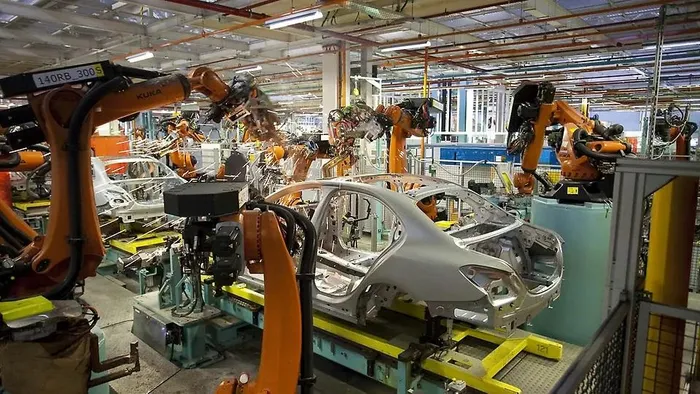Manufacturing output unexpectedly increases in June, signalling positive GDP contribution
MANUFACTURING

However, automotive production is down by 5.6% year-to-date and faces 25% United States (US) tariffs, which have resulted in vehicle exports (units) to the US declining sharply by just over 80%.
Image: Supplied
Manufacturing output surged more than expected in June
Statistics South Africa (Stats SA) on Monday said manufacturing production rose by 1.9% year-on-year in June 2025, quickening from a 0.7% increase in May, and overshooting market estimates of a 1% advance.
This marked the second consecutive month of industrial growth, meaning that the manufacturing sector will have a positive contribution to the overall gross domestic production (GDP) for the second quarter.
Lara Hodes, Investec Economist, said the outcome was ahead of consensus expectations.
Hodes said this was in line with the movement of the seasonally adjusted Absa Purchasing Managers’ index (PMI), which picked up moderately in June, supported by some recovery in demand.
"Accordingly, the sector will contribute positively to the quarter’s GDP outcome, after detracting from the first quarter’s reading," Hodes said.
Nicolai Claassen, director of industry statistics at StatsSA, said five of the 10 manufacturing divisions recorded growth, with food and beverages and petroleum, chemicals, rubber and plastics the largest positive contributors to growth.
On a month-on-month basis, Classen said seasonally adjusted manufacturing production was flat in June compared with May. This followed month-on-month increases of 2.2% in May and 1.6% in April.
Prior to May and June, manufacturing recorded an average monthly annual decline of 2.6% between November 2024 and April 2025, reflecting subdued domestic demand.
"Looking at a bigger picture, the second quarter of the year saw a turnaround. After a slump in the first quarter, seasonally adjusted manufacturing bounced back with a 1.5% increase in the second quarter," Classen said.
"Seven of the 10 manufacturing divisions reported positive growth rates over this period. The petroleum, chemicals, rubber and plastics division, as well as the automotive division, drove most of the upward momentum."
Thanda Sithole, FNB senior economist, said that despite the recent positive print, year-to-date manufacturing output was down by 1.7%, reflecting broad-based weakness across several divisions.
"In particular, automotive production is down by 5.6% year-to-date and faces 25% United States (US) tariffs, which have resulted in vehicle exports (units) to the US declining sharply by just over 80%," Sithole said.
"Traditional Original Equipment Manufacturers (OEMs) also face fierce competition from entry-level (affordable) imports from the East, which may be contributing to the continued weakness in domestic automotive production."
Professor Waldo Krugell, an economist at North-West University, said that the annual increase was heartening but was best explained in terms of how bad last year June was, around the election and prior to the formation of the GNU.
"Anything would look good compared to that basis. The telling number is the month-on-month statistic which shows no change. With all the current uncertainty, manufacturers are just treading water. I think it is worrying," Krugell said.
Professor Raymond Parsons, a North-West University Business School economist, said the June manufacturing print was positive and will help to gauge the country's second quarter GDP figures.
"A number of factors, such as minimal load-shedding, are now underpinning the incipient economic recovery. Other high-frequency data is expected to also look a little better in the months ahead," Parsons said.
"However, the broad economic environment still remains weak, with overall GDP growth of only about 0.9% expected this year."
BUSINESS REPORT